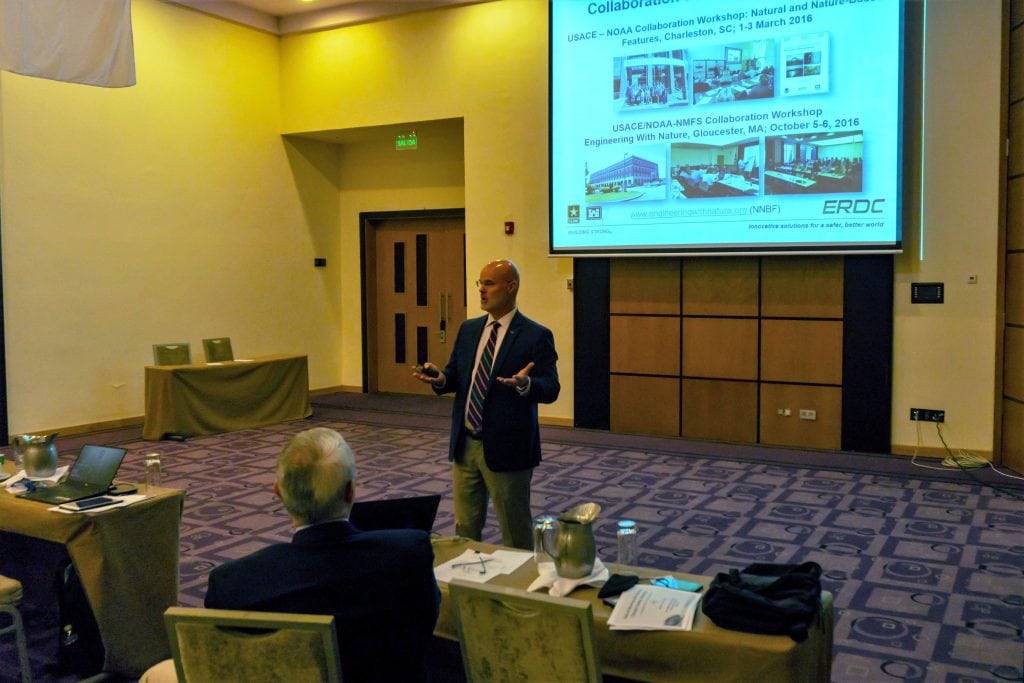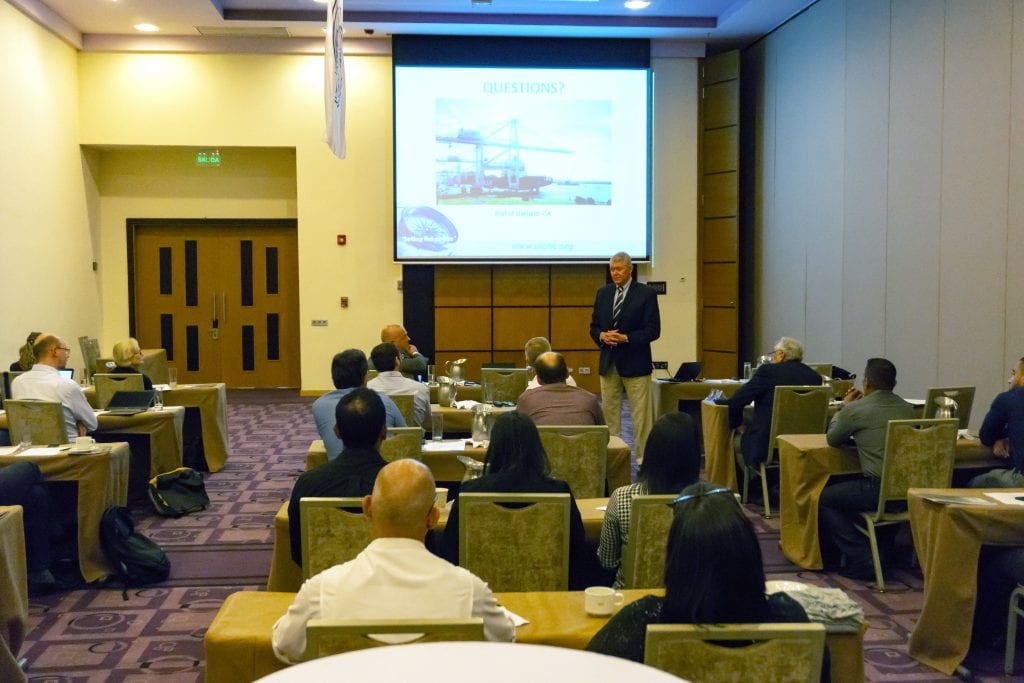A short course on “Working with Nature in the Americas: Generating Ecosystem Services in the Waterborne Transport Sector” was held in Panama City, Panama, coincident with the 34th PIANC World Congress Conference. The short course discussed the application of Working with Nature in practice and drew from three active PIANC EnviCom Working Groups: Working Group 176 on Working with Nature (WwN); working Group 195 on Ecosystem Services; and Working Group 175 on Managing Environmental Risks. Each topic was discussed as it related to waterborne transport infrastructure and an international collection of case examples were presented illustrating how projects effectively created ecosystem services while managing risks. Several projects that were WwN-certified by PIANC were presented as examples of how WwN concepts were applied in the Americas and globally. Short Course Agenda.



Related PIANC Working Groups:
- EnviCom WG 175: Managing Environmental Risks for Waterborne Infrastructure Projects (PDF) – Dr. Burton Suedel
- EnviCom WG 176: Applying Working with Nature in Practice (PDF) – Dr. Victor Magar
- EnviCom WG 178: Climate change adaptation (PDF) – Ms. Jan Brooke
- EnviCom WG 188: Applying Ecosystem Services for Waterborne Transport Infrastructure Projects (PDF) – Dr. Al Cofransesco
- RecCom WG 148: Environmentally Sustainable Recreation Infrastructure (PDF) – Mr. Esteban Biondi
Case Studies:
- Case Study New Tidal Area Kreetsand, Elbe River, Germany (PDF) – Ms. Kirsten Wolfstein
- Case Study San Francisco Bay (PDF) – Ms. Ellen Johnck
- Adaptive Environmental Monitoring for the Management of Dredging and Reclamation Activities (PDF) – Mr. Oliver Stoschek
Discussions and Closing Remarks:
Workshop participants identified a list of necessary ingredients for making progress on developing and implementing Working with Nature in infrastructure projects:
- Promote recognition that natural systems have a value to be conserved and enhanced.
- Advance our ability to measure and communicate added value.
- Improve our ability to investigate, estimate and project the costs for WwN measures and projects. This is needed for communication with decision makers, those who will be approving project investments. We need the means to develop confidence in cost estimates and management.
- Project development should be an inclusive process, from design to outcomes, through meaningful stakeholder engagement (e.g., the community, and others).
- Effective communication is key. Engineers and scientists tend to use technical language. This language is not always accessible to stakeholders. We need to communicate so we are understood.
- Communication should be balanced, to include both environmental and engineering considerations (issues and opportunities). We shouldn’t be emphasizing one to the detriment of the other.
- Project teams would benefit from obtaining professional help to develop and implement comprehensive communication plans.
- Engineers need to understand how to implement WwN in order to develop better projects that incorporate natural value. Also, stakeholders should be actively engaged in order to develop broad understanding about the project. Expectations should be actively managed.
- We need to develop deliberate diversity within our project teams in support of planning, design, construction and operations. Engineers can’t just talk and work with other engineers and biologists can’t just talk and work with other biologists. WwN requires an integrated blend of expertise.
- The worldwide WwN community, including project teams, should engage universities as a way of contributing to the education and training of future engineers and environmental scientists.
- Focused investment is needed to develop design manuals, guides, standards, etc. to support engineering practice related to WwN.
- An integrated approach is needed in the development of future standards so that WwN opportunities and solutions becomes a part of “normal” or conventional engineering practice, e.g., channel design, breakwater design, etc.
- Courage. We need champions who are willing to invest in innovative approaches without perfect knowledge about outcomes.
- Persistence. The path to innovation and progress can be long and bumpy; commitment and determination are needed to keep pushing the project forward. You have to be prepared for the long-haul.

